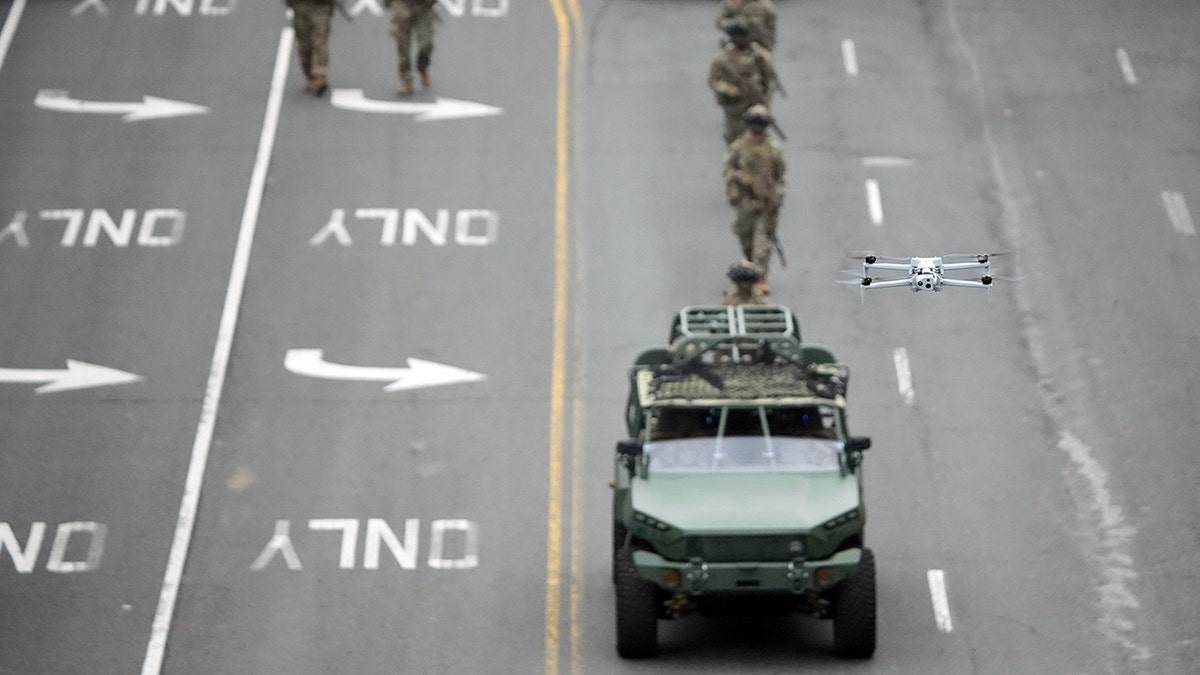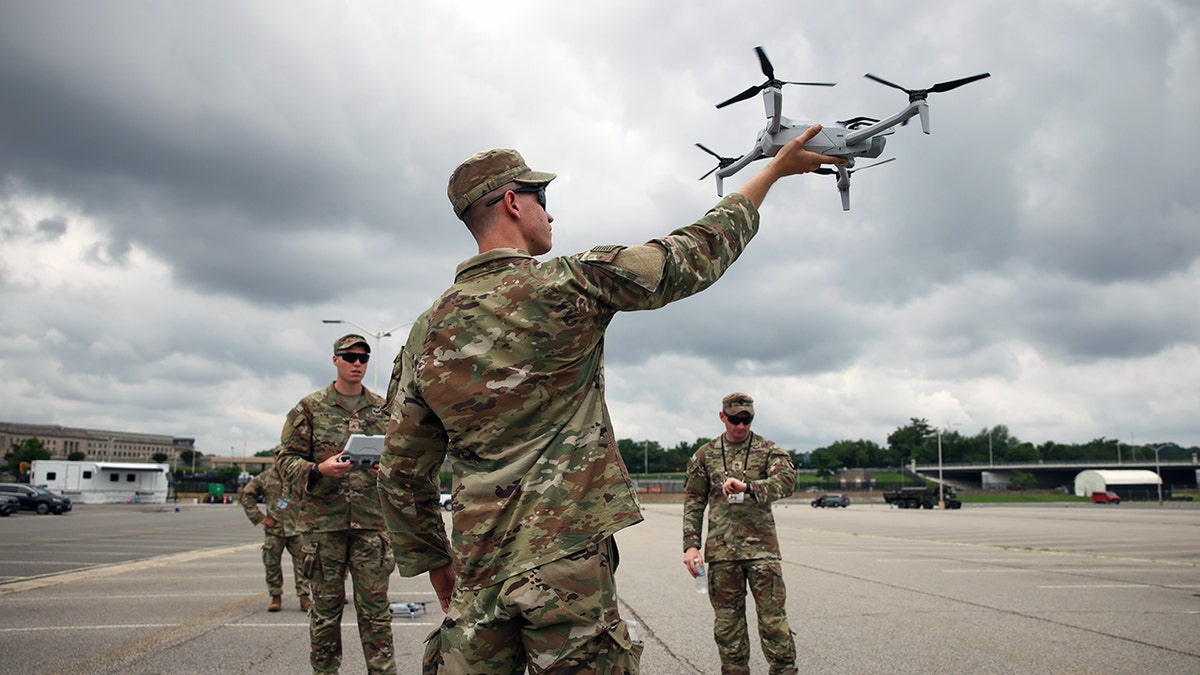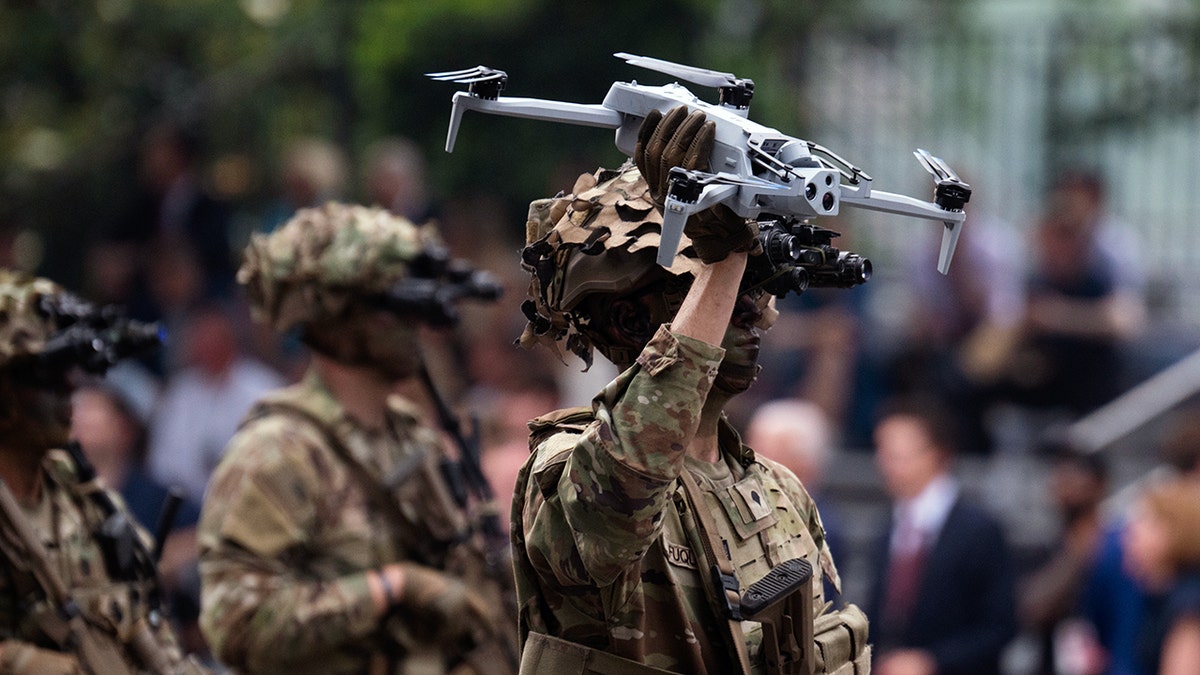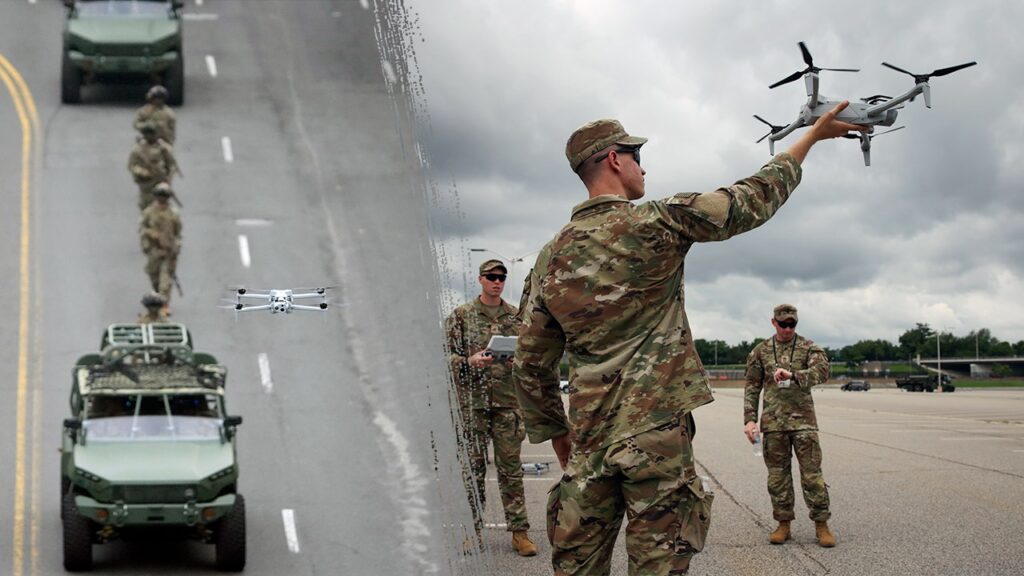NEWYou can now listen to Fox News articles!
As the war between Israel and Iran intensifies, one Army drone expert is warning that the U.S. must stay ready, and fast.
Staff Sgt. Garrett Butts is helping lead the charge by building smarter, cheaper unmanned aircraft systems (UAS) in-house for the battlefield.
In an exclusive interview with Fox News Digital on Tuesday, Butts described how his team is creating drone technology from scratch, often using parts it took nearly a year to legally obtain.
“We’re a transformation and contact unit,” said Butts, who serves with the 1st Cavalry Division. “We’ve been charged with innovating our own SUAS (small unmanned aircraft systems) platforms in-house to cut procurement costs and timelines.”
U.S. ARMY DEPLOYS CUTTING-EDGE $13M SMART RIFLE SCOPES THAT AUTOMATICALLY SHOOT DOWN ENEMY DRONES IN COMBAT

A drone flies overhead during a military parade on June 14, 2025 in Washington, D.C. (Kevin Dietsch/Getty Images)
His team is building 3D-printed drones and testing low-cost, first-person view aircraft to help soldiers on the ground see ahead and strike more accurately.
These systems are meant to keep up with modern war, which is changing faster than the military’s normal supply process.
One of the biggest challenges has been simply getting the parts. Butts said his team had to spend nine months figuring out how to legally purchase drone components because of strict procurement rules.
“There are a lot of laws and policies that govern procurement of SUAS systems,” Butts said. “It took us the better part of nine months to crack the code of what is legal and how we can procure UAS systems legally.”
DEADLY DRONE WARS ARE ALREADY HERE AND THE US IS HORRIBLY UNPREPARED

A soldier holds a drone in the Pentagon parking lot on June 14, 2025 in Arlington, Virginia. (Samuel Corum/Getty Images)
His team trains soldiers to fight against drone threats, so they needed special permission just to buy parts that mimic what enemies might use. Butts said drones give U.S. troops a major advantage as infantry units can use them to look over obstacles.
“Put a camera up, look at the objective or look over an obstacle… to ensure their safety,” he said. “Those are the biggest winning factors of our SUAS systems.”
However, it is not just about seeing. Drones can also be armed to deliver targeted strikes.
“You can arm some of these systems and basically create a cost-effective precision-guided munition,” he said. “At a fraction of the cost.”
Butts’s team is involved in “Pegasus Charge,” a new Army effort to test future tactics and technology for heavy combat units. “We are going to innovate, experiment, test and develop different tactics, techniques and procedures,” Butts explained.
His team is trying out in-house ideas and will look to privatized industry for more advanced options once funding is available.

A soldier holds a drone in the U.S. Army’s 250th anniversary parade on Constitution Avenue, NW, which is also President Donald Trump’s 79th birthday, on Saturday, June 14, 2025. (Tom Williams/CQ-Roll Call, Inc via Getty Images)
After training for nine months in Poland and Germany, Butts and his team returned with new strategies for using drones in real-world situations. He believes the Army must work closely with industry to get the best tools quickly. Butts also sees artificial intelligence playing a big role. Right now, drone operators need advanced navigation training, which takes time and is hard to maintain.
“If we’re able to integrate AI solutions that could mitigate for that training or replace that training, that would be a huge step in the right direction,” he said.
Butts said working on cutting-edge technology has been a meaningful experience.
“Being at the forefront of it is pretty incredible,” he said. “Watching how the technology is evolving in front of your eyes… it really sparks ingenuity.”
He did not plan on staying in the Army, but a chance offer to become a drone operator changed his path.
“It’s shown me what I’m truly capable of,” he said.
Now, as the Army celebrates its 250th birthday and the world watches rising conflict, Butts said he sees real momentum.
“Our military is innovating,” he said. “And it’s truly incredible to watch.”



